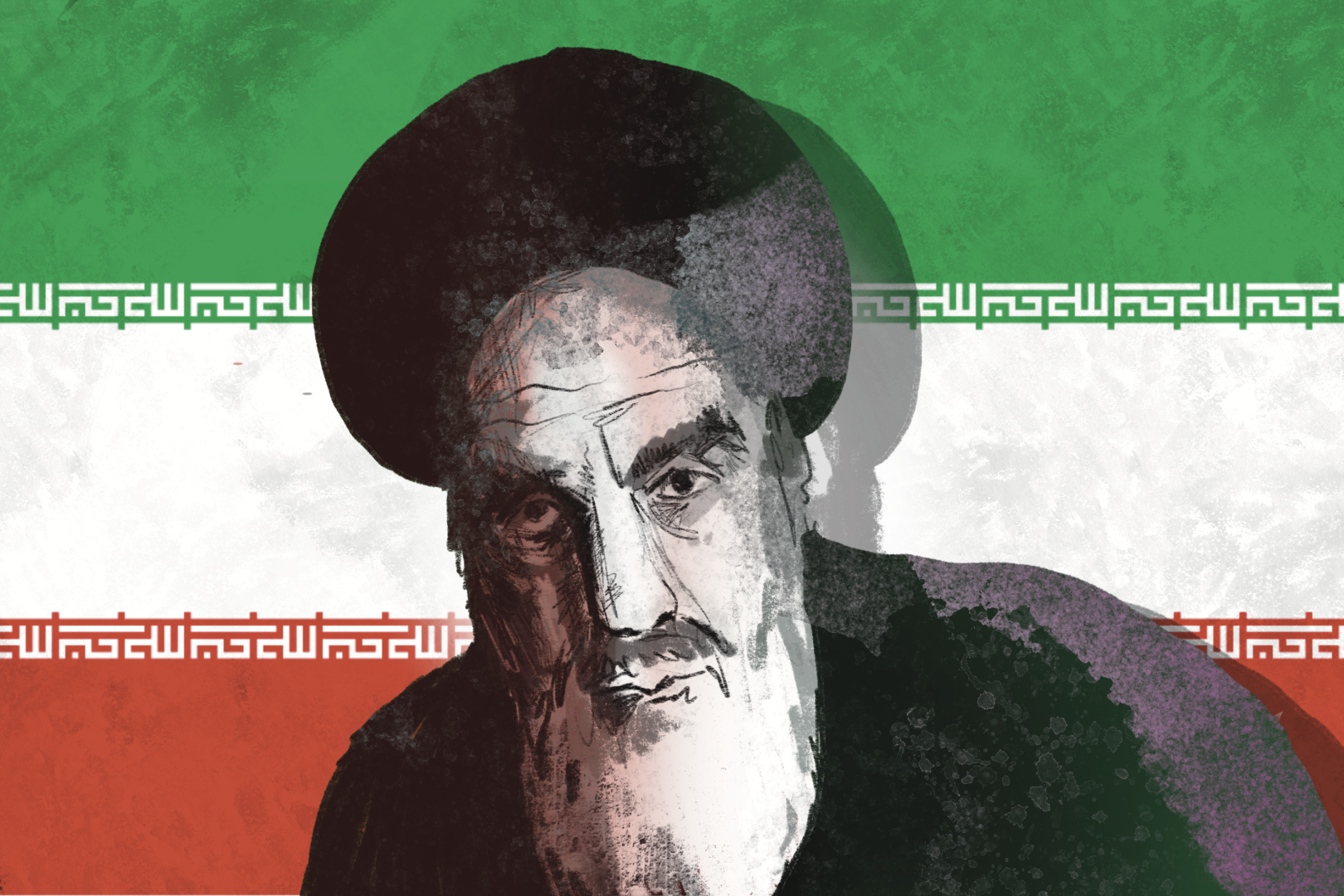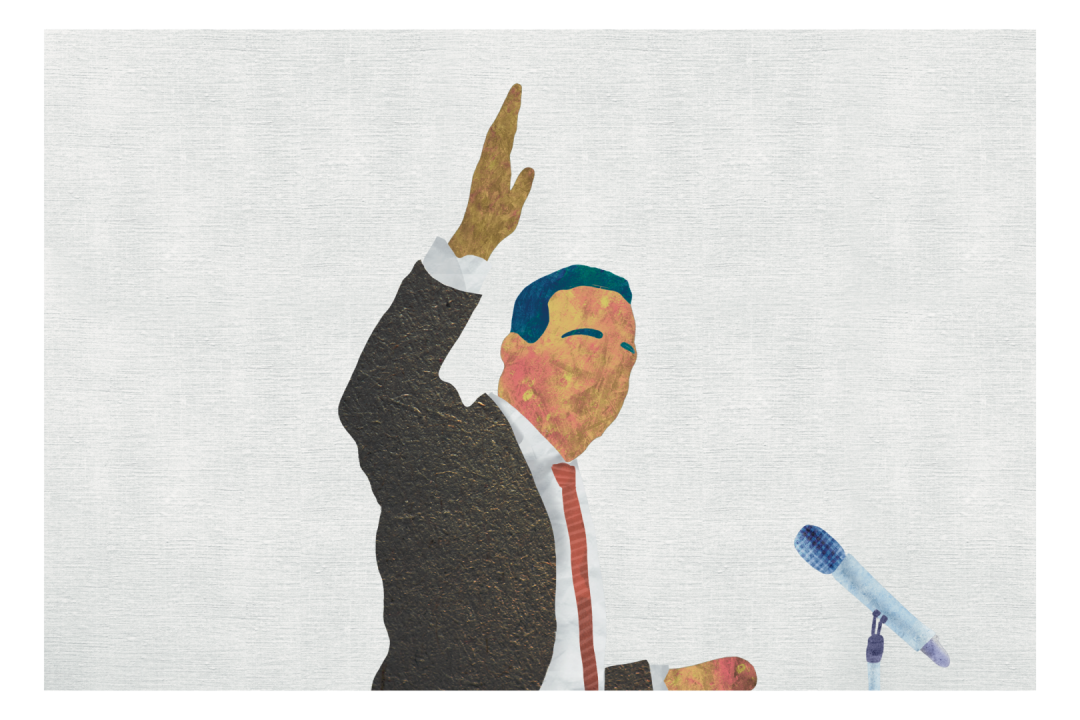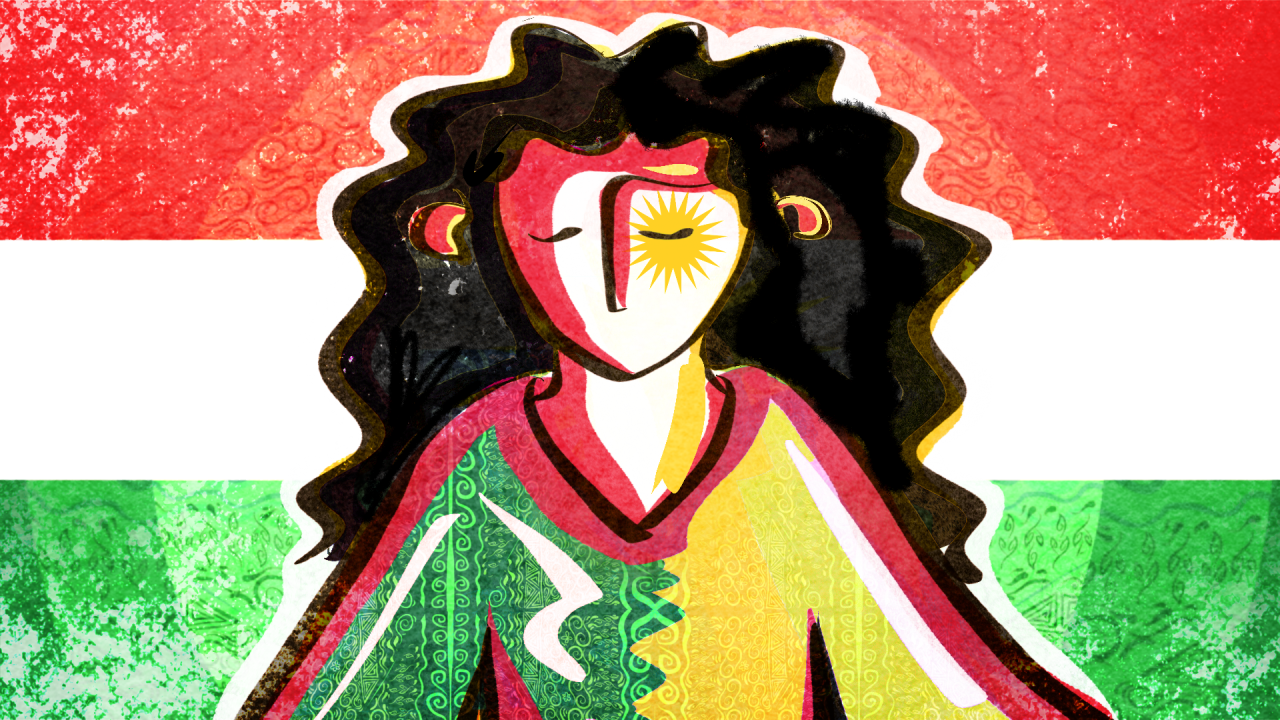
The 1979 Revolution of Iran: How Khomeini Thwarted Reform
By: B.E
Introduction:
1979 Iran was a pivotal moment in contemporary Middle Eastern history. Discontent over the policies of Shah Mohammed Reza Pahlavi led to a series of demonstrations and protests that resulted in his deposition and the start of the Iranian Revolution. This popular uprising was supported by various political organizations with widely different ideological goals such as nationalists and leftist groups yet all of them agreed to an end to the monarchy. In particular, Shia Islamists, supported and led by exiled cleric Ayatollah Ruhollah Khomeini, demanded the establishment of a clerical state based on Khomeini’s own theory of Wilayah al-Faqih (Guardianship of the Jurist). This article revisits the role Khomeini had in establishing the Islamic Republic and how his politically savvy decisions redirected a revolution that was broad and inclusive in its ideological aims toward a theocracy based on religious fundamentalism and a cult of personality.
Background:
Much of Iran’s history from the early 20th century up until 1979 is centered around the Pahlavi dynasty. Founded by Reza Shah Pahlavi in 1925, the royal family soon consolidated their control over the country and began a massive series of reforms and projects meant to westernize the country.
The legacy to continue the reforms was undertaken by the Shah’s eldest son, Mohammed Reza Pahlavi, who inherited the throne in 1941. Educated in Switzerland, the young Shah was eager to transform Iran from a tribal and underdeveloped monarchy into a secular and modernized absolute Iran.
Despite his education and commitment to reform, his strict policies and violent crackdown on opposition using his secret police force SAVAK quickly distinguished him as an authoritarian ruler who would later cause the emergence of various political and social organizations dedicated to the opposition of Shah’s lifestyle and close alliance with western powers.
"Operation Ajax.” Shah’s Coup and Nationalist Alienation
In 1953, Mohammed Mosaddegh, a popular prime minister, was deposed in a military coup orchestrated by the CIA to position Mohammed Reza Shah as the sole ruler in a secular, anti-communist western monarchy.
Mosaddegh was a staunch nationalist who pushed for various reforms and laws that elevated Iranian interest, particularly, his push to nationalize the oil industry away from foreign interests such as the UK and the US who, in turn, were concerned with Mosaddegh's cooperation with the Tudeh Party, the Iranian pro-soviet communist party.
The Shah’s installment on the throne as an absolute monarch and the removal of the nationalist prime minister caused a long-lasting rift between the two which would play a vital role in the 1979 revolution.
The “White” Revolution (1963)
After assuming complete control, the Shah began a period of drastic top-to-bottom reforms he called the “White Revolution”.
Agricultural, Social, and Economic reforms, together with severe centralization of power, the White Revolution was Mohammed Reza Shah’s attempt to introduce Iran into a new age. From land reforms to woman suffrage, the Shah radically attempted to establish himself as the sole reformer in Iran, a position that angered the Shah’s closest allies he had left after the conflict with the nationalists: the orthodox Shi’a clergy that represented the religious guidance for the country.
At first, the clergy was closely allied with the Shah, only partaking in government affairs when it was constitutionally acceptable. However, with time, it was proven that the Shah’s faithful allies significantly opposed his western outlook and progressive reforms that targeted land and social codes established and upheld by religious authorities.
Early activism by clerical leaders began with protests sparking the nation. The June Uprising of 1963 demonstrated the ability the clergy had in mobilizing manpower when it was shown that almost 15% of the total protesters who were arrested and injured in the aftermath of the protests were considered to be Ulema or religious scholars. The protest was by large a response due to the arrest and then exile of a popular figure in the midst of the clergy, a pro-reform turned-revolutionary cleric named Ruhollah Musavi Khomeini. Better known as Ayatollah Khomeini.
The Disappointed Imam
Ayatollah Khomeini was born into a religious family in Khomain, Iran in 1902. From a young age, he was mentored and educated by his older brother who sought the responsibility to raise him since both of his parents died when he was still young. Having learned Arabic and the basics of Shi’a Islamic thought, Khomeini traveled to the city of Arak in 1920 in hopes to enroll in an Islamic school to learn Islamic jurisprudence (Fiqh). It was here that Khomeini began to publicly affirm the position of an orthodox, conservative, and traditional role for Islam in the affairs of the monarchy.
During that period, Khomeini was a prolific writer who captivated many of his readers with his poetic style that sounded fresh and captivating in comparison to the traditionally conservative Ulema in Qom that relied on older techniques that the young cleric avoided.
Khomeini’s early political beliefs were mainly shaped by how he looked upon Islam. As a young fundamentalist, he witnessed the decline of political Islam all across the Middle East with the establishment of secular republics and the fall of the Ottoman Empire, the so-called last caliphate of the Islamic world. Even within his own country, he became worried about the immense push the Shah made toward secular and social reforms.
With the gradual rise of socialist and nationalist movements within Iran between the 1960s and the mid-1970s and the Shah’s oppressive approaches toward modernization, Khomeini’s frustration turned into political activism when he first began publicly speaking out against the Shah's policies in the early 1960s.
It was then that he confronted the government with his revolutionary rhetoric and religious rulings (Fatwas) declaring the monarchy to be an unsuitable, illegitimate form of governance, instead opting for what he called the “Guardianship of the Islamic Jurist” (Wilayat al-Faqih)
Khomeini's rhetoric for dismissing the Shah as a legitimate leader turned into a call for overthrowing the monarchy when the Shah exiled him in 1964, following the aftermath of the June Uprising. Khomeini spent the next 14 years in Turkey and Iraq until he moved to France in 1978. The cleric remained a committed critic of the Shah regime throughout the entire time he was in exile.
The 1978 Revolution
The Shah’s autocratic push for modernization made him many enemies. From the left, the argument was that of uneven development and progress paid for by the working class by both rural and urban proletariat. For nationalists, it was the inevitable betrayal and cooperation of the Shah with foreign powers at the expense of the country’s national interest. The fundamentalist clergy, usually an ally of the monarchy, did not abstain from the conflict either, pushing against the Shah’s perceived infringement on their traditional powers and responsibilities.
The most significant in their opposition to the Shah was perhaps the clergy, usually a supporter of the monarchy, that threw their support behind the vision of a clerical, orthodox, and fundamentalist Iran of Khomeini.
As is usually the case with authoritarian regimes, the Shah’s government orchestrated its own downfall. On January 6, 1978, it provoked the clergy by publishing an editorial denouncing Khomeini and his rhetoric. In protests, the clergy closed the main bazaar in Qom - an area where Iran’s largest seminaries are based. The protest that coalesced in the area was then violently dispersed by the security forces. An ever-escalating cycle of protest, repressions, deaths, and mourning caused more anger on the streets. By the winter of 1978, Shah effectively loses control of the country, unable to form the government, assuage the opposition or effectively counter Khomeini’s rhetoric who has become the symbolic leader of Iranians’ opposition to the monarchy.
But the last straw came from one of the Shah’s own devices of power: The Army.
The Return of the Cleric and the Parallel Governments
On January 16th, 1979, the Shah fled Iran, leaving his nationalist prime minister, Shapour Bakhtiar, in charge of the country. Bakhtiar, a vocal critic of the Shah, was well-positioned to establish a nationalist and secular state, however, his government was undermined by Khomeini’s triumphant return to Iran on February 1st. Keenly aware of his popularity and overwhelming influence, as well as the Army’s reluctance to support Bakhtiar, Khomeini declared that no government or organization should be recognized as legitimate except the ones he declared so. His next steps betray that Khomeini was not simply an ideological leader of the country but also a keen politician with clearly defined political ambitions. While he did not support Bakhtiar, his choice of prime minister was Mehdi Bazargan, the leader of the Freedom Movement of Iran, a nationalist political party.
Just like Bakhtiar, Bazargan wasn’t ready to support Khomeini’s theocratic alternative to democracy: he was a staunch supporter of an inclusive, democratic Iran that wanted to continue the legacy of Mossadegh. Yet what separated him from other nationalists was that he was deeply respected by the Islamists and attained some level of support from the various fundamentalist organizations.
This move effectively created two interim governments, both nationalist, but one appointed by the now-absent Shah and the other – by the famous and beloved religious leader with the support of the country’s clergy. Between them, the army, the clergy, and various leftist opposition groups, the country’s political landscape was by no means easy to consolidate. The following months proved that Khomeini was ready to think outside of the box of Islamist ideology and apply many of the realist and populist moves.
While a stable religious government was still the end goal for Khomeini and the clergy, he understood that a country as vast as Iran would need effective local government and an established bureaucracy to make it a reality. Appointing Bazargan was perhaps the most effective and unconventional move toward it. Whereas his peers and fellow fundamentalists were occupied with denouncing the revolutionary factions with wide-reaching reforms, he appointed a secular nationalist into office because he understood the needs of managing a country. As a prime minister, Bazargan created a qualified and allied political force to take over the remnants of Shah’s state while Khomeini’s continued impassioned appeals to the masses guaranteed the people lent legitimacy to Khomeini’s alternative. Bakhtiar effectively pushed out and quit after just 38 days in office.
Within months after Khomeini’s return, the Islamists and Bazargan-backed government secured most of the popular support from the Iranian people thanks to the tactics deployed by organizations such as the Islamic Republican Party. With the popular support firmly secured and the old Shah’s government effectively pushed out of the corridors of power, the time was right for the next step.
But perhaps the biggest role in the success of the revolution becoming an Islamist one was Khomeini’s decisive, out-of-the-box policy in implementing the revolution. Although firmly convinced by his revivalist mentality towards Islam, he practiced political tactics far beyond the traditional scholastic approach that most clerics focused on. When his peers and fellow fundamentalists were occupied with denouncing the revolutionary factions with wide-reaching reforms, he appointed a secular nationalist into office because he understood the dynamics of running a country like Iran.
A National Referendum and the establishment of the IRGC
In the last days of march, the Iranian people took part in a referendum that would decide a country’s future for the decades to come.
Between March 30-31, the population had to choose whether they wanted Iran to become an “Islamic Republic”, a political system set out by the Islamic Republican Party that was staunchly supported by Khomeini, or keep a fragile provisional system for an alleged democratic republic - an option heavily criticized by the Islamists for being fragile and unreliable.
It was not long before the various factions, including the nationalists not aligned with Bazargan’s government and the left, together with some Islamists, attempted to stand up to Khomeini’s evident takeover and the organs that were protecting Khomeini’s Wilayat Al-Faqih system. The moves made by the opposition, however, came too late, were ineffective, and, most importantly, lacked popular support.
On May 5, Khomeini established the Islamic Revolutionary Guard Corps (IRGC), a paramilitary force meant to be a vanguard of the Islamic system Khomeini had built. It would ultimately proceed to use terror as a way to achieve its power.
The opposition to Khomeini’s reforms finally rallied on August 3rd when the clerical body known as ‘the assembly of experts’ positioned itself as the authority behind the new Islamic constitution. This last attempt at an organized opposition quickly fell apart, for Khomeini and his allied government had both the popular support and, if necessary, the means to enforce their will. All that was left was to formally subordinate Bazargan’s interim government to the religious authority.
The Hostage Crisis. Khomeini’s “Second Revolution”
As Prime Minister of the interim government, It was Bazargan’s sole responsibility to initiate international diplomacy in order to safeguard the restoration of Iranian statehood. He became ultimately confused as to how to manage the delicate position he was in. As Prime Minister, he was the de-jure head of Iran, making decisions such as appointing a cabinet and initiating discourse between countries like the United States. But the blessing that had him put in power in the first place soon would become the reality of Iranian political initiation.
All along, it was the Islamist factions under the supervision and guidance of Khomeini that had the power to legitimize Bazargan’s political decisions, and Bazargan’s acceptance to meet with the United States, a country that had orchestrated the removal of a once popular prime minister in Iran and ultimately allowed for Mohammed Reza Shah’s safe passage to the US for treatment of his terminal illness was harshly rejected by Khomeini’s supporters.
The popular outrage at the government’s attempt to treat the US manifested itself on November 4 when students mobbed the American embassy in an effort to demonstrate Islamist resolve in its anti-American message. Bazargan saw this as a takeover of a government already destined to be under Khomeini. There was no third decision that would let him stay in power. Either he would extend the growth of the Islamists for a takeover, or accept a resignation.
Conclusion
On November 6, Mehdi Bazargan and his cabinet resigned in protest, Bazargan considering the Embassy takeover an uncivilized approach to diplomacy. If students mobbing the United States embassy chanting slogans defending Khomeini and his associates was not enough, US foreign policy to consider Iran a hostile nation that sponsors terrorism was the final nail in the coffin for a dream of a pluralistic Iran. There was no more room for a pluralistic and democratic Iran.
The new Islamic Constitution was approved less than a month later, on December 3rd, with two-thirds of the Iranians voting in favor of the new theocratic state. It was with the approval of the new constitution that Khomeini finally saw the fruits of his hard work being fully achieved in an effort to demonstrate his legitimacy as a popular ‘face of the people’.
But it was not only his thug-like intimidation of the opposition and any policy or habit that transgressed against the basic pillars of religious fundamentalism which fueled a comeback. It was Khomeini’s careful middle-ground position in affirming a political and social revolution when he needed to. His decision to empower a nationalist government, even if for a brief period of time, provided him with an institutional framework to formalize his power.
His control of the state apparatus through the proxy of the interim government allowed his Islamist organizations to provide the masses with the basic goods and services the political conflict deprived them of. Psychologically, this assistance would later become the basis of the sweeping popular support. Radical fundamentalists sought the removal of inclusive and democratic approaches, and the abolishment of basic liberties that urban Iranians enjoyed, and were not afraid to deploy force against the women of Iran for protesting against mandatory veiling.
But Khomeini and his supporters demonstrated themselves to be suitable ‘saviors’ when most needed. They addressed Iran’s issues of economic exploitation and poverty, the famous Social Question of Hanna Arendt, securing sweeping popular support. This, together with a careful approach to penetrating and subordinating the state through established institutional means led to an Islamic republic chosen and supported, at least initially, by the people. A great demonstration that Ayatollah Khomeini never was simply an inspiring religious orator. He was a savvy political operator who maneuvered the country and its people exactly where he needed them to make his vision of a religious fundamentalist state come true.
Sources:
- The Making of Iran’s Islamic Revolution
- The stolen revolution: Iran in 1979 | Red Flag
- Revolutionary History || Iran 1979: The Stolen Revolution • ISA
- Mark Bowden: How Iran's Revolution Was Hijacked - WSJ
- ANALYSIS: The personality cult of Ruhollah Khomeini | Al Arabiya English Mohammed Mosaddegh - Middle East Theater



